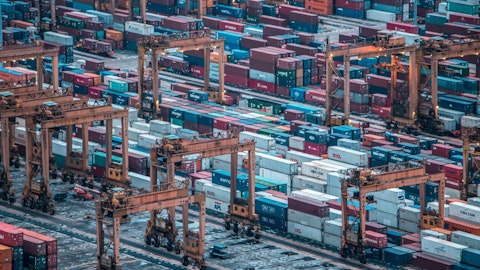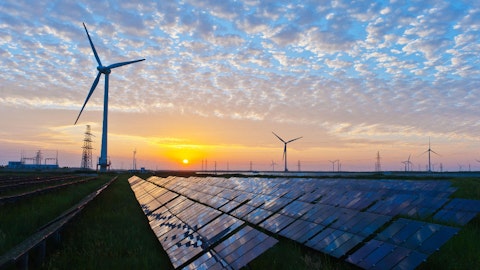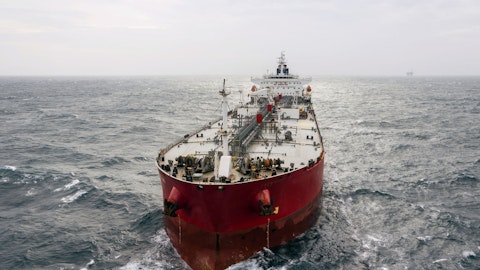Omar Nokta: Got it. Well, thanks for that color, Lars. I appreciate the time. I’ll turn it over.
Lars Barstad: Thank you.
Operator: Thank you. Now, I’m going to take our next question. And the question comes from the line of Jon Chappell from Evercore ISI. Your line is open, please ask your question.
Jon Chappell: Thank you. Good afternoon. Apologies for the miniature of this question, but it’s pretty important. So your dividend policy were back to paying dividends. And I think with the ruling on February 7 kind of all-in costs are off, you can do whatever you want to do with your cash. If we look at the third quarter and the fourth quarter distribution based on adjusted earnings, it looks like about an 80% payout ratio. So the first thing I wanted to do was confirm if there is a — an actual payout policy that we can model to 70% — 80% of adjusted earnings. And then the second part of it is this depreciation reset that you’re doing when you’re adding $59 million in annual depreciation. That’s not cash but it is earnings. So does that mean that the payout would be potentially pegged to cash as opposed to EPS going forward because of this DNA reset?
Inger Klemp: Let’s take the first, first. There is actually an offset payout policy install — if that’s what you mean. But I guess you can use 80% that we have been paying now for the last quarter, that’s a good guesstimate. But obviously, it will be the Board that will decide that’s going forward. With respect to the depreciation policy, I wasn’t sure I got your question but could you please repeat?
Jon Chappell: Yes, sure. So if your payout policy is based off of net income, adding $59 million of depreciation, it’s pretty meaningful. It’s over 50.
Inger Klemp: It means that probably $0.05, $0.06 a quarter NOI, it’s not more than that. Hello?
Lars Barstad: I think we lost you there, Jon.
Inger Klemp: We believe so.
Operator: Thank you. Now we’ll go and take our next question. And the next question comes from the line of Amit Mehrotra from Deutsche Bank. Your line is open, please ask your question.
Chris Robertson: Hi, everyone, this is Chris Robertson on for Amit. Thanks for taking our questions.
Inger Klemp: Hello.
Lars Barstad: Hi, Chris.
Chris Robertson: Hi. You spent quite a bit of time here in the presentation talking about the older and the fleet. And I think it’s an important question moving forward. So in your minds, the owners with vessels over 20 years of age, do you think that they’re simply going to ride out this current cycle and then exit the market or do you think these owners will engage in fleet replacement ordering at some point in the future. So I guess in other words, how much of the older end of the fleet is likely to get replaced at some point versus simply just going away forever?
Lars Barstad: Yes, that’s again a very good question. I think if we start with the older portion of the fleet, we have two brackets of fleets. We have the absolute dark fleet, the one who have gone completely wrong and the trade Benecel and an Iranian crude, that’s basically is a fairly large portion of the 20-year-plus fleet, they are probably not going to reinvest in modern tonnage at any point in time. They’re probably just going to ride these assets as long as they float. Then we have the more kind of mature ships if you probably hovering around 17.5 years, which we now tend to call the gray fleet. A large portion of this fleet is currently being engaged in trading of Russian crude and products. Again, I think the same goes for this fleet as well.





